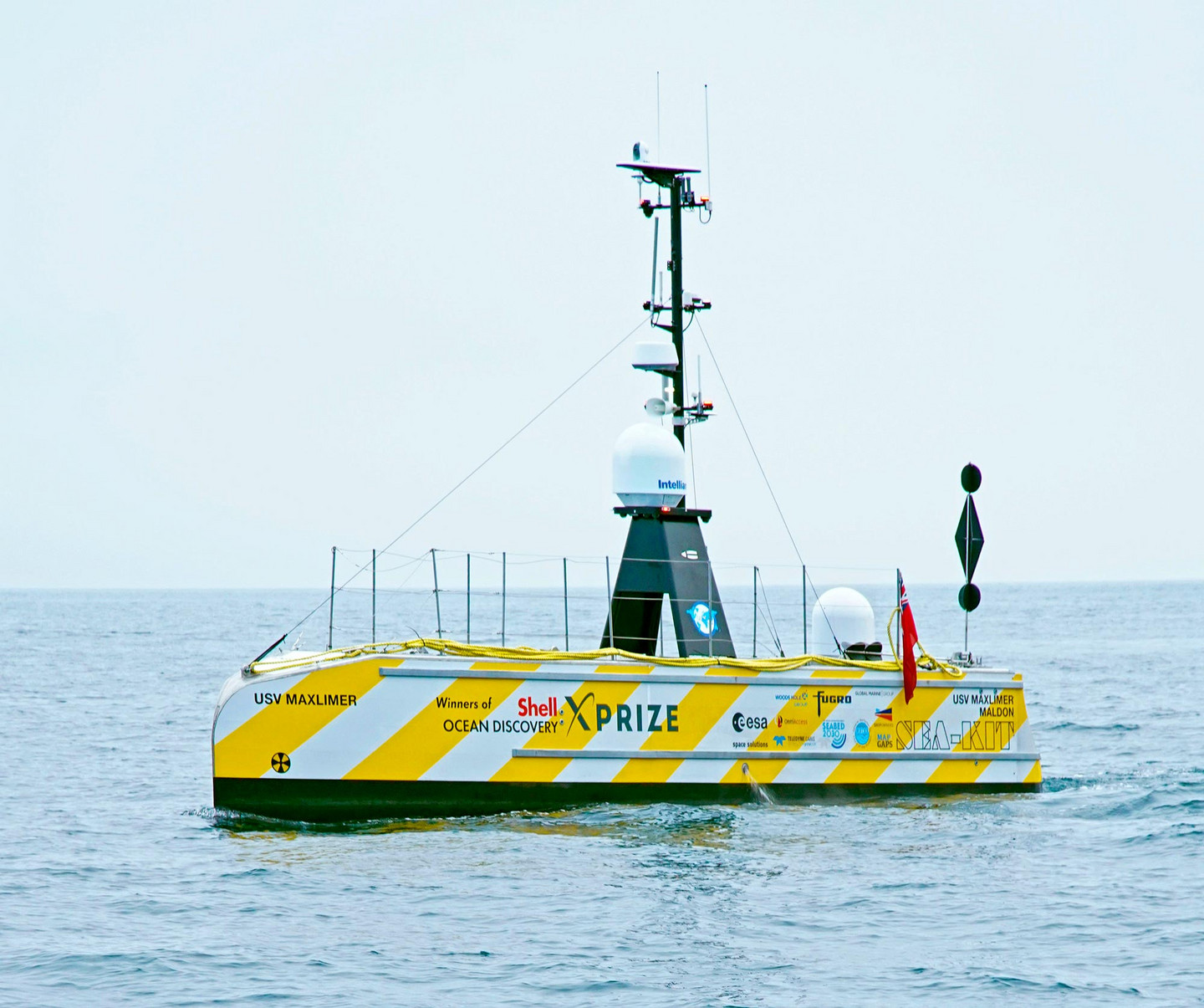
Unmanned USV
USV’s, vessels that operate as remotely controlled systems
Unmanned Surface Vehicles or USV’s are vessels that operate as remotely controlled systems, but that at a later stage may become completely autonomous systems. USV´s generally require robust communications to allow it to operate the various sensors, such as cameras, radars, samplers, etc. The live stream from these sensors provides situational awareness whilst also ensuring that it can conduct its primary activity such as collection of water samples, scanning deep-sea floor-beds or delivering mission payloads.
The benefits of providing high-speed low latency connectivity are essential in the performance of remote operations. At present the limitations regarding object detection/identification, and those of collision avoidance result in the need for a human element, the elimination of these onboard activities that can now be carried out remotely will significantly reduce operating costs.
USV projects that we are involved in: SEA-KIT, etc
SEA-KIT is the world's first truly long-range, long-endurance and ocean capable unmanned survey vessel. It was created from a need to map the world ocean floors, of which 80% still remains unmapped.
Back in December 2015, the Shell Ocean Discovery XPRIZE was created with its goal to “accelerate innovation for the rapid and unmanned exploration of the uncharted deep sea; catalyze markets in deep ocean exploration and discovery, sustainable resource development, and protection; illuminate the most mysterious part of the planet; and ignite the public imagination.”
Dozens of teams competed for the prestigious title and a grand prize of $7M. Out of all the entries the only one that managed to fully pass all the rigorous field-test was submitted by team GEBCO-Nippon Foundation Alumni with their SEA-KIT entry. To determine the winner, teams had 24 hours to map 250km2 of ocean seafloor at a 5m horizontal resolution or higher. After extensive field testing, it was decided on May 31st2019 that the XPRIZE for Advancements in Autonomous Ocean Exploration was to be awarded to team SEA-KIT.
In addition to this, on the 9thof May 2019, before the recent XPRIZE announcement, SEA-KIT made the first autonomous commercial crossing of the North Sea from UK to Belgium. The 12 meter-long USV navigated some of the busiest shipping lanes in the world to safely deliver a 5kg cargo of oysters.
The challenge for OmniAcces for both the XPRIZE and first autonomous commercial crossing, was to provide SEA-KIT with low latency and high bandwidth connectivity whilst, at the same time, utilising a small existing 60cm VSAT antenna, allowing operators to remotely access CCTV footage, thermal imaging, radar, as well as the ability to communicate with nearby vessels.

Image: Rich Edwards, ENP Media
The challenge for OmniAcces for both the XPRIZE and first autonomous commercial crossing, was to provide SEA-KIT with low latency and high bandwidth connectivity whilst, at the same time, utilising a small existing 60cm VSAT antenna, allowing operators to remotely access CCTV footage, thermal imaging, radar, as well as the ability to communicate with nearby vessels.
“OmniAccess have been an important part of the team that achieved both the XPRIZE and conducting the first autonomous crossing. We look forward to continue working together into the future.”
Benjamin Simpson – Managing Director of SEA-KIT International Ltd
Throughout the testing and crossing the communication robustness almost reached 100% availability, this was achieved through the use of multiple VSAT backup links together with our Plexus Controller and our dedicated 24×7 remote support in case of any issue. OmniAccess’ propriety Plexus Controller (Ctrl) allowed SEA-Kits´ control centre to monitor all onboard communications, giving them the ability to instantly switch between VSAT beams as well as easily conduct WAN selection.
